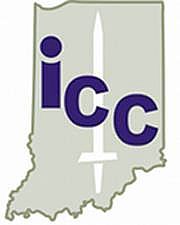 05/01/12 As National Cancer Control Awareness Month was winding down, Monday was an opportune moment for the Indiana State Department of Health, Indiana Cancer Consortium (ICC) and the American Cancer Society to release the Indiana Cancer Facts and Figures 2012, the State’s only comprehensive report on the burden of cancer.
05/01/12 As National Cancer Control Awareness Month was winding down, Monday was an opportune moment for the Indiana State Department of Health, Indiana Cancer Consortium (ICC) and the American Cancer Society to release the Indiana Cancer Facts and Figures 2012, the State’s only comprehensive report on the burden of cancer.
“This report has the most recent cancer information available and identifies current cancer trends and their potential impact on Hoosiers,” said State Health Commissioner Gregory Larkin, M.D. “This helps give us a more comprehensive understanding of Indiana’s progress towards meeting the goals and objectives outlined in the Indiana Cancer Consortium state cancer control plan.”
Major findings in the report include:
- Annually, more than 30,000 Indiana residents are diagnosed with cancer. Also, an estimated 2.4 million Hoosiers, or two in five persons now living in Indiana, will eventually develop cancer during their lifetime.
- Cancer is the second leading cause of death in Indiana. Approximately 12,000 Hoosiers succumb to cancer each year.
- The most commonly occurring cancers for both the state and the nation are the same. Excluding skin cancers, breast and prostate are the most prevalent cancers among females and males, respectively. Lung and colon cancers are the next most common cancers among both sexes. Annually, lung cancer is responsible for the most cancer-related deaths among both sexes.
- In Indiana from 1999 to 2008, the age-adjusted incidence rates for all cancers combined decreased 0.5 percent from 466.5 to 464.1 cases per 100,000 people. Likewise, the age-adjusted cancer mortality rates decreased by 10.6 percent from 215.4 to 194.8 deaths per 100,000 people. Trends varied among the different cancer types.
“The report indicates that progress continues to be made in the early detection and treatment of certain cancers, and that the incidence and mortality of some cancers is declining, both very positive signs for Indiana,” said Dr. Larkin. “However, a significant burden still exists among Hoosiers that requires continued and more targeted cancer prevention and control efforts.”
Many cancers can be prevented by modifying external risk factors and making lifestyles choices, such as eliminating tobacco use, improving dietary habits, increasing physical activity, losing weight, and avoiding excessive sun and infectious disease exposures. Furthermore, many cancers can be prevented or identified at an early stage if people receive regular medical care and obtain early detection cancer screenings.
To download a copy of the Indiana Cancer Facts & Figures 2012 and to find additional information about cancer prevention and control in Indiana, please visit the ICC’s website at www.indianacancer.org.














